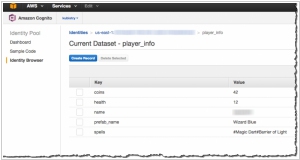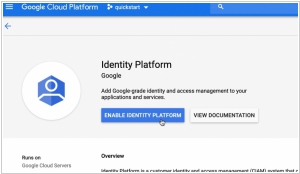Amazon Cognito vs Google Identity Platform
August 06, 2023 | Author: Michael Stromann
Amazon Cognito and Google Identity Platform are both identity management solutions provided by two major tech companies, but they have some key differences in terms of features and integrations. Here are the key differences between Amazon Cognito and Google Identity Platform:
1. Cloud Provider: Amazon Cognito is a service provided by Amazon Web Services (AWS), while Google Identity Platform is offered by Google Cloud Platform (GCP). This means that their underlying infrastructure and ecosystem may differ.
2. Authentication and Authorization: Both platforms provide authentication and authorization capabilities, allowing users to sign up, sign in, and manage user identities. However, the implementation and features vary.
- Amazon Cognito: Cognito supports several authentication options, including username/password, social identity providers (such as Facebook, Google, and Amazon), and OpenID Connect (OIDC). It also supports multi-factor authentication (MFA) and integrates with AWS Identity and Access Management (IAM) for fine-grained access control.
- Google Identity Platform: Google Identity Platform supports authentication through Google accounts, federated identity providers (like Facebook, Twitter, and Microsoft), and OpenID Connect (OIDC). It also provides features like customizable user flows and multi-factor authentication (MFA).
3. User Management and Data Storage: Both platforms allow you to create and manage user profiles, store user data, and handle user attributes. However, they differ in their storage options and data model.
- Amazon Cognito: Cognito provides built-in user directories to store user profiles and attributes. It also integrates with other AWS services like Amazon DynamoDB, Amazon S3, and Amazon RDS, allowing you to leverage these services for user data storage and management.
- Google Identity Platform: Google Identity Platform uses Google Cloud Directory, which offers a flexible and scalable user storage solution. It can also integrate with other Google Cloud services like Cloud Firestore and Cloud Storage.
4. Pricing and Billing: The pricing models for Amazon Cognito and Google Identity Platform differ, and it's important to review their respective pricing details to understand the costs associated with each platform.
- Amazon Cognito: Cognito has a pricing structure based on monthly active users (MAUs), which includes free tier options and variable pricing based on the number of users and their interactions.
- Google Identity Platform: Google Identity Platform pricing is based on the number of monthly active users (MAUs) and the API usage. It also offers a free tier and volume-based discounts.
5. Integration Ecosystem: Both platforms provide SDKs and APIs for easy integration with various platforms and frameworks. However, they may have different levels of integration with their respective cloud provider ecosystems.
- Amazon Cognito: Cognito is tightly integrated with the broader AWS ecosystem, enabling seamless integration with other AWS services for building scalable and secure applications.
- Google Identity Platform: Google Identity Platform integrates well with other Google Cloud services, providing a cohesive ecosystem for developing and managing applications within Google Cloud.
See also: Top 10 Identity Management platforms
1. Cloud Provider: Amazon Cognito is a service provided by Amazon Web Services (AWS), while Google Identity Platform is offered by Google Cloud Platform (GCP). This means that their underlying infrastructure and ecosystem may differ.
2. Authentication and Authorization: Both platforms provide authentication and authorization capabilities, allowing users to sign up, sign in, and manage user identities. However, the implementation and features vary.
- Amazon Cognito: Cognito supports several authentication options, including username/password, social identity providers (such as Facebook, Google, and Amazon), and OpenID Connect (OIDC). It also supports multi-factor authentication (MFA) and integrates with AWS Identity and Access Management (IAM) for fine-grained access control.
- Google Identity Platform: Google Identity Platform supports authentication through Google accounts, federated identity providers (like Facebook, Twitter, and Microsoft), and OpenID Connect (OIDC). It also provides features like customizable user flows and multi-factor authentication (MFA).
3. User Management and Data Storage: Both platforms allow you to create and manage user profiles, store user data, and handle user attributes. However, they differ in their storage options and data model.
- Amazon Cognito: Cognito provides built-in user directories to store user profiles and attributes. It also integrates with other AWS services like Amazon DynamoDB, Amazon S3, and Amazon RDS, allowing you to leverage these services for user data storage and management.
- Google Identity Platform: Google Identity Platform uses Google Cloud Directory, which offers a flexible and scalable user storage solution. It can also integrate with other Google Cloud services like Cloud Firestore and Cloud Storage.
4. Pricing and Billing: The pricing models for Amazon Cognito and Google Identity Platform differ, and it's important to review their respective pricing details to understand the costs associated with each platform.
- Amazon Cognito: Cognito has a pricing structure based on monthly active users (MAUs), which includes free tier options and variable pricing based on the number of users and their interactions.
- Google Identity Platform: Google Identity Platform pricing is based on the number of monthly active users (MAUs) and the API usage. It also offers a free tier and volume-based discounts.
5. Integration Ecosystem: Both platforms provide SDKs and APIs for easy integration with various platforms and frameworks. However, they may have different levels of integration with their respective cloud provider ecosystems.
- Amazon Cognito: Cognito is tightly integrated with the broader AWS ecosystem, enabling seamless integration with other AWS services for building scalable and secure applications.
- Google Identity Platform: Google Identity Platform integrates well with other Google Cloud services, providing a cohesive ecosystem for developing and managing applications within Google Cloud.
See also: Top 10 Identity Management platforms





